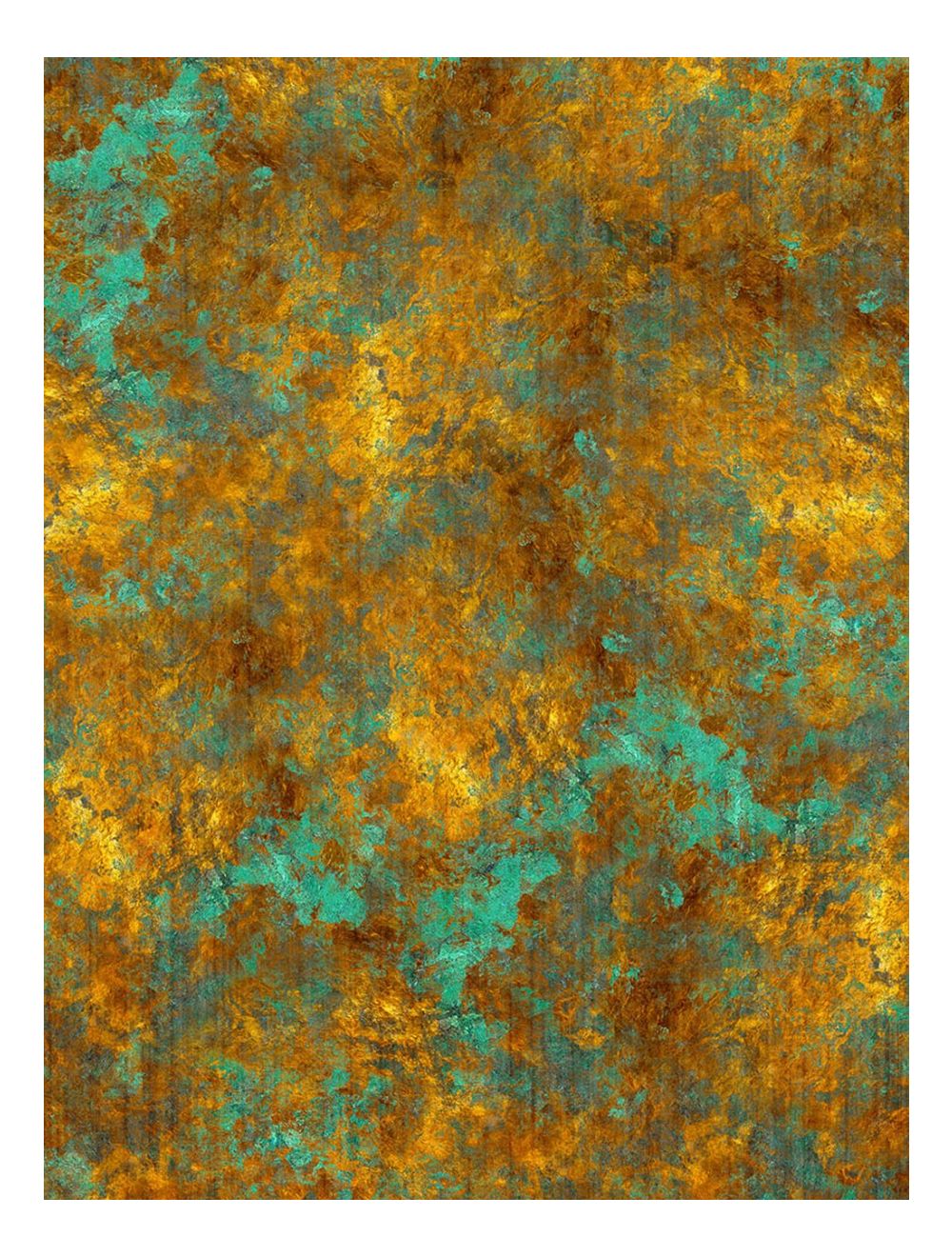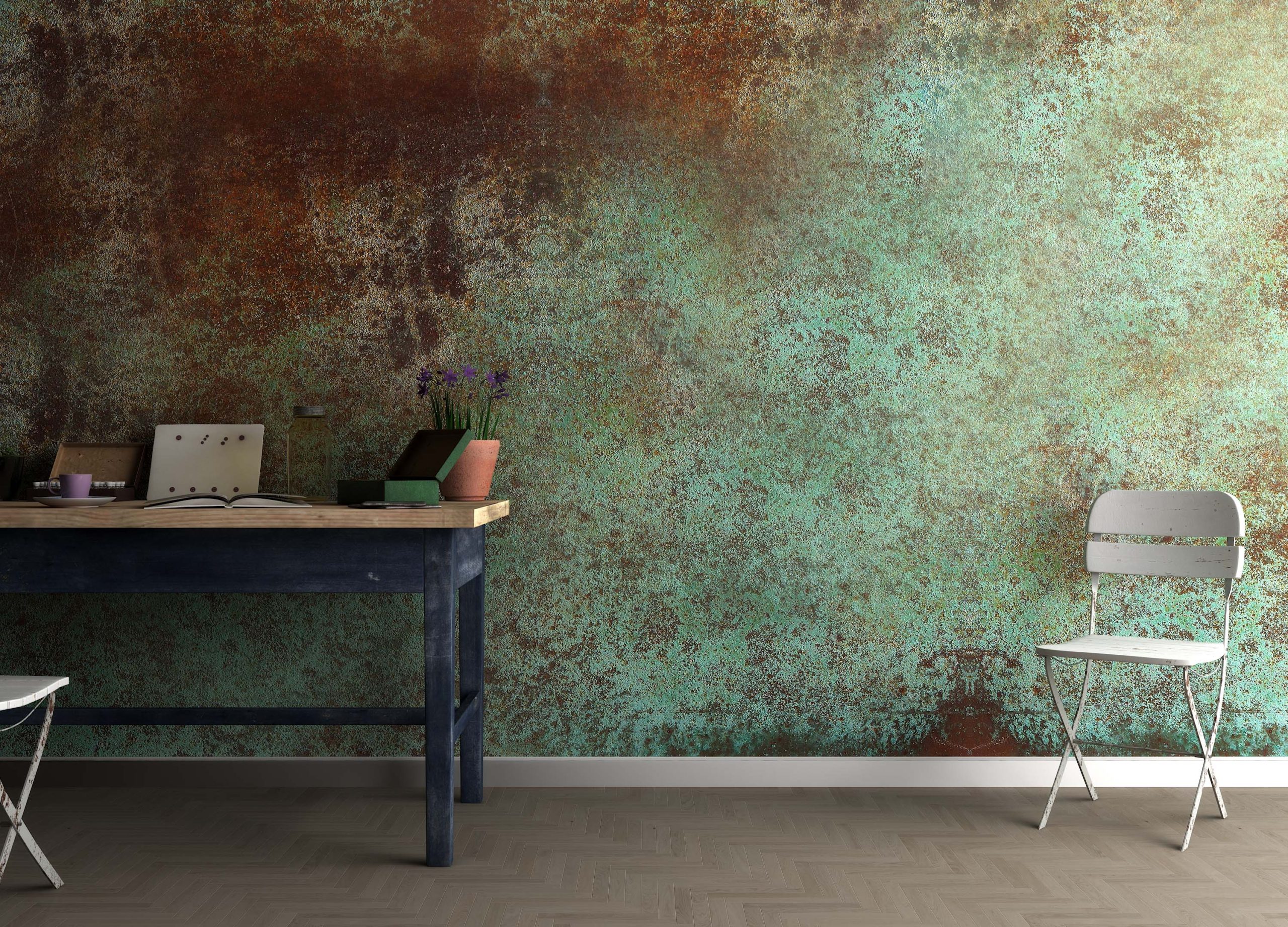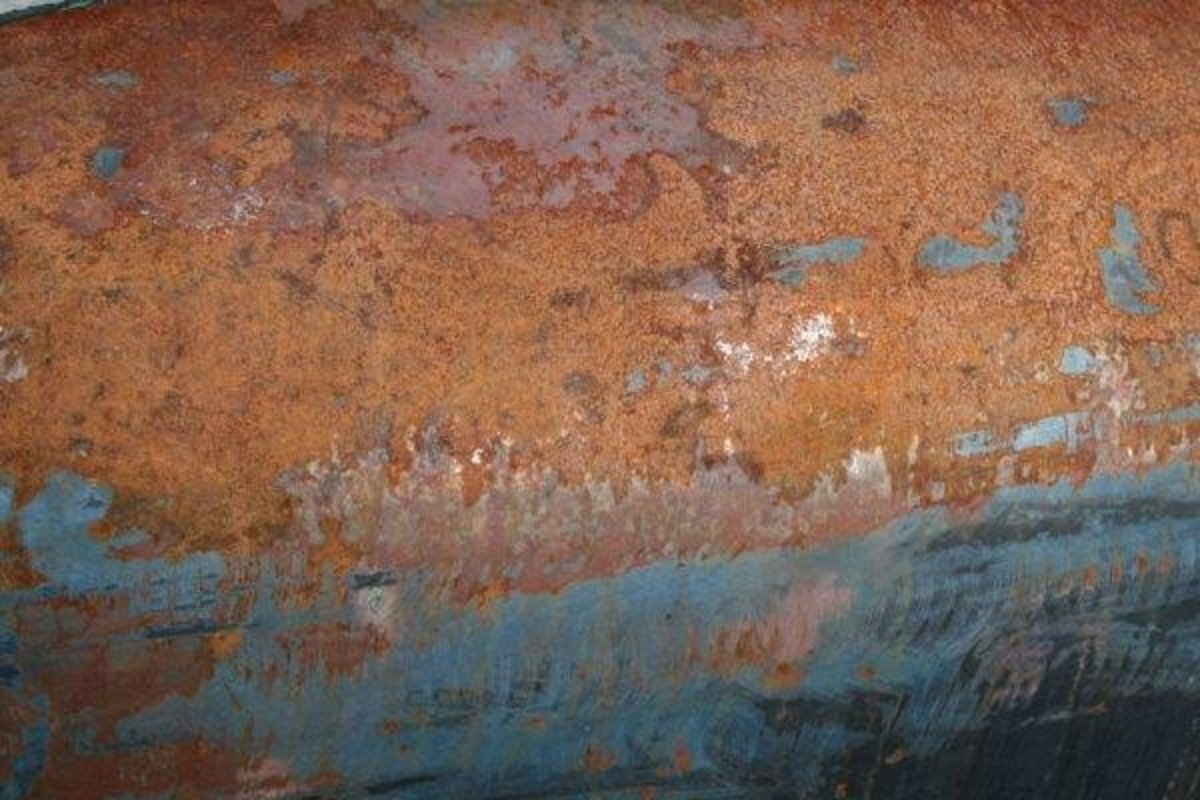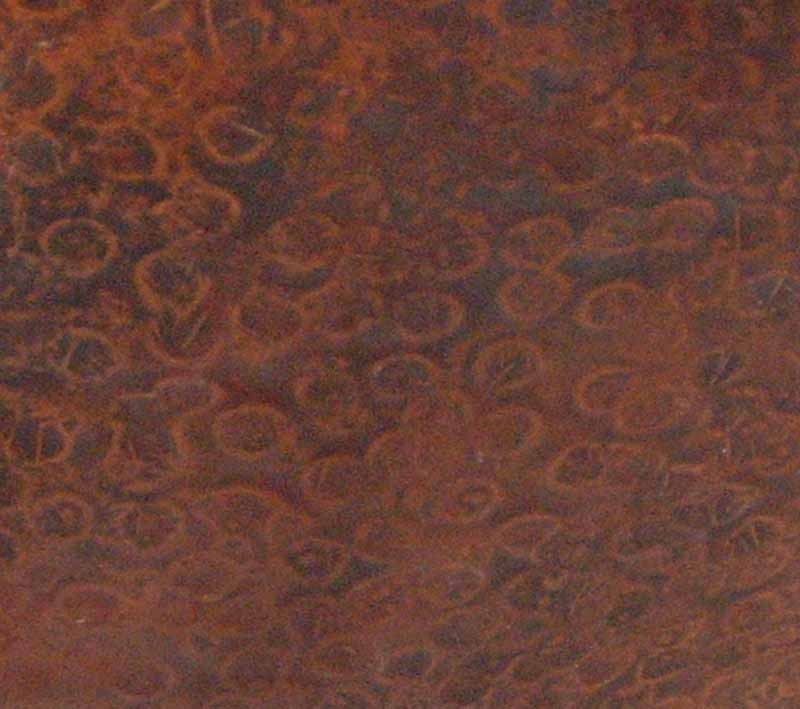
Dining table top reclaimed wood patina finish 24 x
Spray a light coat of water over the plate, then place salt where you want "rust." In areas where you want no top coat color, make sure to completely pile enough salt to cover any gaps. After.

How to Patina Paint DIY Metal Finishes, with 20 Examples! in 2020
This Faux Metal Patina Paint project uses chalk paints with actual metal dust that you can then spray with the oxidizing patina spray to make real oxidized copper, bronze, and iron (or rust) patina looks. This is so much easier and more fun than trying to layer a bunch of paint colors to get a realistic patina paint finish.

How to create Faux Oxidized Copper Patina Finish with Heirloom
Dry thoroughly with paper towel. Let the panel air dry before the final polish with wax. I leave mine on my easel so that both sides can dry. 4. Final Buff Up With Wax. Final wax of stained glass patina. Repeat 2. above, but this time using wax instead of polish. Let the wax dry completely before buffing.

Native Patina
The liquid is a special varnish that gives the wood a light yellow or golden hue inherent in antique oak or ash. Facet varnish is not a patina but an antique effect based on cracking. After drying, the varnish is covered with the thinnest cracks, as with ancient wood. You can combine the types of coatings to get more interesting effects.

Have you tried a copper patina finish Copper patina, Patina finish
Note the golden hue of the dial. That's "aged" varnish on the dial. Nitrocellulose varnish is likely what's on most vintage varnished metal dials, and nitrocellulose "ages" in interesting ways, creating what most people call "patina.". Though 'patina' is technically only meant to indicate oxidizing metals, people in the.

DIY Patina Paint Faux Metal Bronze, Copper, and Rust 20 Easy Looks
The patina on wood is an impressive way to show the age, beauty, and value of the furniture. It can either be a naturally occurring process or an intentional man-made decoration. The significant difference between the two is that natural patina takes years to form, while the man-made option is only a temporary fix.

Copper Backsplash with Patina Finish
After an initial rinse, Bar Keepers Friend is applied and worked into the wet, surface-rusted finish. For this step we're using the Scotch-Brite side of the sponge. Then it's lather, rinse, and.

Faux Copper Patina Paint the Easy Way Patina paint, Copper patina
Patina is the natural color that a metal will take on over time. "Patina doesn't flake on metal and is mainly just a color change, such as bronze turning green," says Eileen Fulton, a restorer for O'Sullivan Antiques in New York City. The term is commonly used in relation to copper or bronze pieces, and while it can be removed, many opt to.

How to Paint a Patina Finish with Chalk Paints Cheryl Phan
A car's finish doesn't need a famous name attached to earn the title of patina. If an average Joe in the car's past performed careful, high-quality work, and portions of the paint have rubbed through or some trim has lost its gloss, the time and cost associated with a full restoration would be significant.

Working With Metal Patina How To Achieve Metal Patinas
6 - Seal the patina in using a clear varnish. This will both protect the paint and patina and prevent the patina developing further. The varnish can be water or solvent based. I tend to use a matt or satin varnish because I like a more authentic looking patina. That's my preference anyway.

Patina finish General Finishes 2018 Design Challenge
I used this "fuming" method to create the rustic patina on my brass bracelet: Place wadded-up paper towels in the bottom of your plastic grocery container. Soak them with ammonia, and sprinkle salt generously on top. Wipe both sides of your bracelet with these ammonia-soaked paper towels.

About Patina Finishes Patina Samples
Usage. On metal, patina is a coating of various chemical compounds such as oxides, carbonates, sulfides, or sulfates formed on the surface during exposure to atmospheric elements ( oxygen, rain, acid rain, carbon dioxide, sulfur -bearing compounds). [2] In common parlance, weathering rust on steel is often mistakenly [3] referred to as patina.

Patina Finishes for Steel
Wind abrasion removes the softer salts and polishes the patina to a glossy finish. The rate of varnish formation varies: it generally is thought to take about 2,000 years for it to form in arid areas, because it coats artifacts and natural objects known to be of such antiquity; but it has formed in less than 50 years in the Mojave Desert. Both.

About Patina Finishes Patina Samples
The differences between tarnish, patina, and rust are that rust is never an intentional occurrence, tarnish forms a glowing bronze tone on a few types of metal, and patina is a type of tarnish that usually shows up copper. Some homeowners use paint to make their metals show a tarnish or patina.

French Grey Aged Patina Finish Thicketworks
3. Soak the metal in vinegar. Add vinegar to your clean, dry container so there is enough to completely submerge the metal. Then add an equal amount of salt to the vinegar, stir it thoroughly, and insert the metal so it can sit in the solution and create a vinegar-salt patina.

Patina Finishes for Steel
It is simply a chemical process that reacts with the wood to create a unique appearance. Using patina as a varnish will not protect the wood from damage or wear and tear. Using Varnish As A Patina. Another mistake people often make is using varnish as a patina. Varnish is a clear protective finish that is designed to protect the wood from damage.